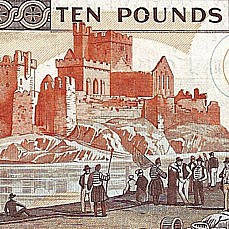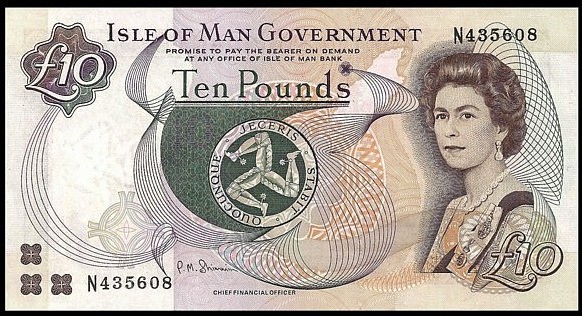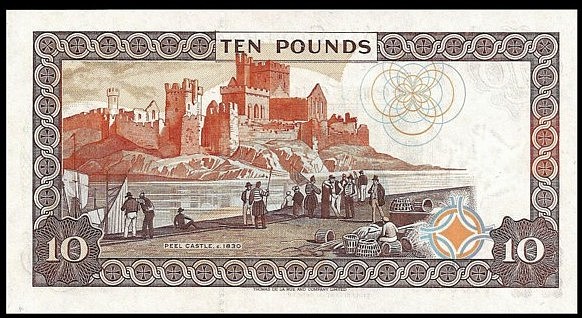ISLE OF MAN
Peel Castle

As early as 500 AD, Irish monks had settled near the site of Peel Castle on tiny St. Patrick’s Isle, only about 200 feet from the shore of the Isle of Man. Legend has it the in the 1400’s Irish missionaries were accompanied by St. Patrick himself when they arrived, but it was likely St. German instead of St. Patrick, though the Island retains Patrick’s Name. The islet was a safe harbor for the Christian monks and provided secure storage for food supplies. It’s harbor also protected boats from the full effects of the storms in the Irish Sea. This harbor, which was filled in sometime in 1873, was known locally as “The Lake”.
Over many years, the monks were able to establish a growing trade and they had grown quite prosperous. This success came at a price, however, as the lure of riches sent out a beacon to the Vikings who plundered the tiny islet, and eventually returned to stay. According to the Peel Heritage trust, by 1098 AD the Vikings, led by Magnus Barefoot, erected the first fortification on St. Patrick’s Isle, made of wood.
Magnus Barefoot (aka Barelegs), son of the Norwegian king Olaf Kyrre, obtained his moniker in one of two ways. Icelandic lore reports that he was called Barelegs due to his style of clothing, which left the legs bare. But the more plausible theory comes from the Danish reports that he had to flee from a battle barefooted.
Magnus had built his fort in a style that incorporated the use of fences made of wood with pointed ends, called a “pale”. It is supposed that the word pale was corrupted to Peel, the eventual name of the castle and adjacent city. The entire Isle of Man was thus under control of the Norse, and was subject to the king of Norway. A battle in 1266 involving the local Manx Norsemen against the Scottish at the town of Largs, west of Glasgow, resulted in a loss for the Manx, and the Isle of Man came under Scottish Control. Subsequent wars between England and Scotland found the Isle of Man under the firm control of England by 1399.
Peel Castle’s construction took place over a long period of time. Along with the wooden fortress built by the Norse, Peel Castle incorporated some of the stones from the original monastery cathedral and subsequent churches built on St. Patrick’s Island, including the round tower. About 1390 the ‘Curtain Walls’ were built to help defense during low tides. It wasn’t until the 1500’s that the main walls and towers were built from the local red sandstone. Peel Castle remained in use as a defensive fortification until 1860.
Peel Castle served many uses in its history including, not surprisingly, a prison in which the prisoners were kept in the dreary crypt. It held regular prisoners as well as political and religious as well. It was infamous for being used to punish persons who would violate the prohibitive rules of the Sabbath, which included working, singing, playing, etc.
The cathedral was in continual use until 1785 when it was abandoned and stripped, including the removal of its lead roof and stained glass. Today all of Peel Castle is in ruin, with only its outer walls remaining intact.
Peel Castle’s folklore includes links to King Arthur’s Castle of Avalon, the castle that housed the Holy Grail, and even the Moddey Dhoo, a ghost of a black dog who is a supposed portent of impending death.
Today, the Isle of Man is a British Crown Dependency, able to issue its own currency, currently pegged to the British Pound Sterling. The Isle of Man Government issued a Ten-Pound banknote which, since 1972, has featured Peel Castle as it appeared in 1830.

